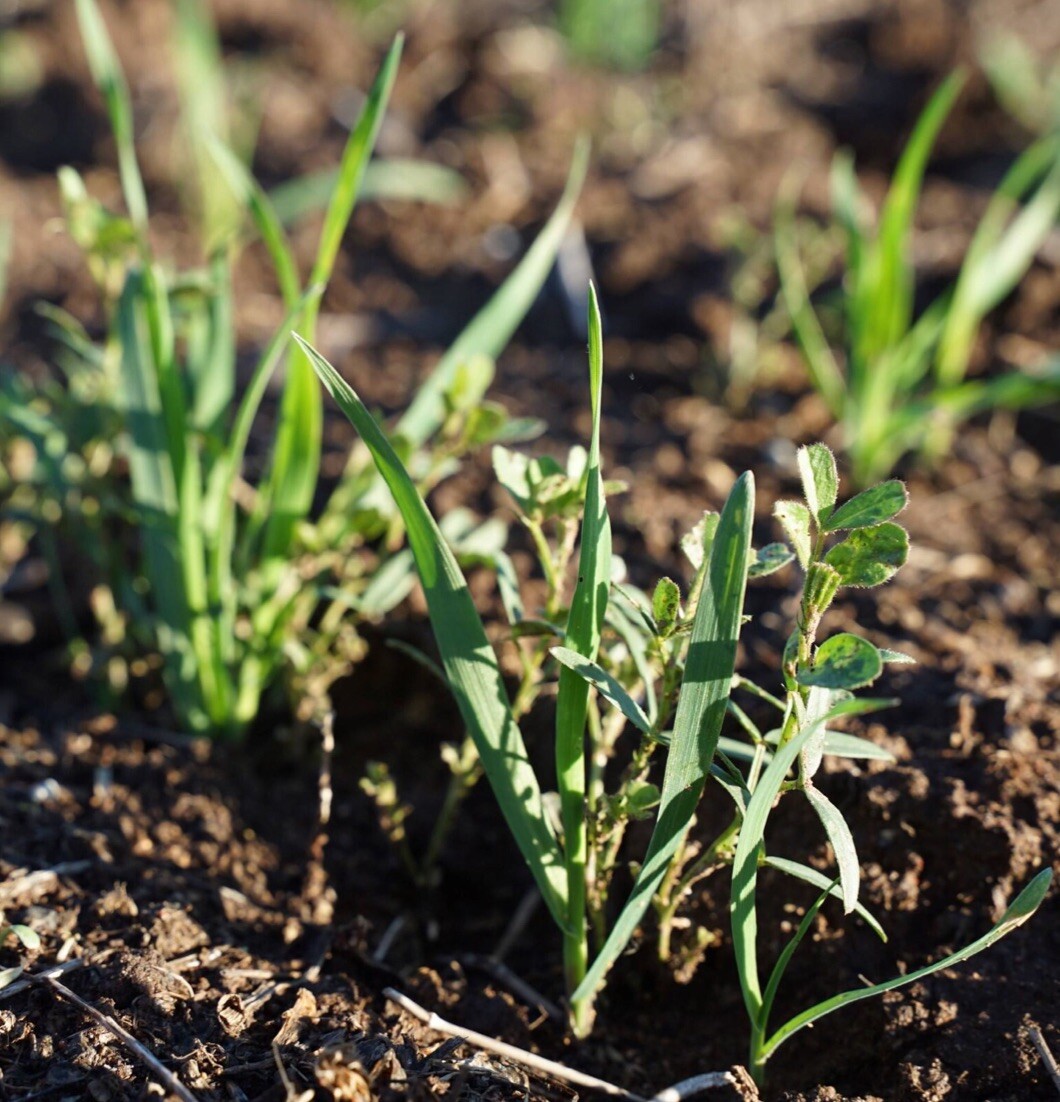FODDER
Fodder is a vital source of animal feed and provides alternative markets for grain producers. Our projects are proving new ways of collaborating to benefit all.
For more information contact
WHY FODDER IS AN IMPORTANT PART OF PRODUCTION SYSTEMS IN THE RIVERINE PLAINS
Fodder serves as a primary source of nutrition for livestock. It includes pastures, crops for grazing and those preserved as hay or silage, for feeding out at a later date.
Providing a well-balanced diet is crucial for maintaining the health and well-being of animals and high-quality fodder plays a key role in maximising livestock productivity levels.
Legume-based pasture species commonly grown in the Riverine Plains for fodder include medics, clovers and lucerne. Grain crops such as wheat, oats, millet, peas and vetch are also frequently sown for hay or silage production. High-quality hay and silage can also be made from other grain crops, including canola, providing they are cut and baled at a time that maximises feed quality.
During periods of drought, or when frost damages the grain yield potential of a crop, a crop intended for grain can be salvaged by turning it into hay or silage. In the Riverine Plains, this can provide an alternative income stream for grain farmers that are able to sell into local dairy or beef cattle markets. It also provides an alternative feed source for livestock producers.
Fodder production can be used by grain and mixed farmers to benefit the whole farming system. For example, cereals can be cut for fodder to reduce weed burden and seed set in a paddock, while nitrogen fixing species are often included in hay mixes to build soil nitrogen levels and provide a nitrogen boost to the following crop.
Species with deep tap roots, such as lucerne and species of grazing radish, can open up soils and improve water infiltration and root growth in the following crop.
Research highlights
- The Fodder for the Future project showed how dairy farmers and fodder producers can work together to optimise the quality and yield of a range of fodder species in the southern Murray Darling Basin.
- Riverine Plains is monitoring the progress of two lucerne demonstration sites established at Savernake and Barooga in 2023, as part of the Drought resilient pasture systems project.
Fodder for the future
This project helped connect dairy farmers with hay and silage producers, to optimise the quality and yield of a range of fodder species, including vetch.

OUR FODDER PROJECTS
Our fodder-related projects help grain and livestock producers address production gaps and profitability issues in the Riverine Plains.
-
Enhance pasture management to increase resilience in dry seasons and boost farm productivity using decision support tools created from local paddock scale demonstration trials.
-
Helping dairy farmers and fodder producers optimise the quality and yield of a range of fodder species, including vetch.
WHAT’S ON
Discover past and upcoming events – from webinars and seminars to workshops and field days.
-
Thursday 15 May 2025
-
Tuesday 15 October 2024
-
Wednesday 10 April 2024
-
Wednesday 21 June 2023
-
Tuesday 13 June 2023
NEWS
Discover unique perspectives on fodder from across the Riverine Plains.
